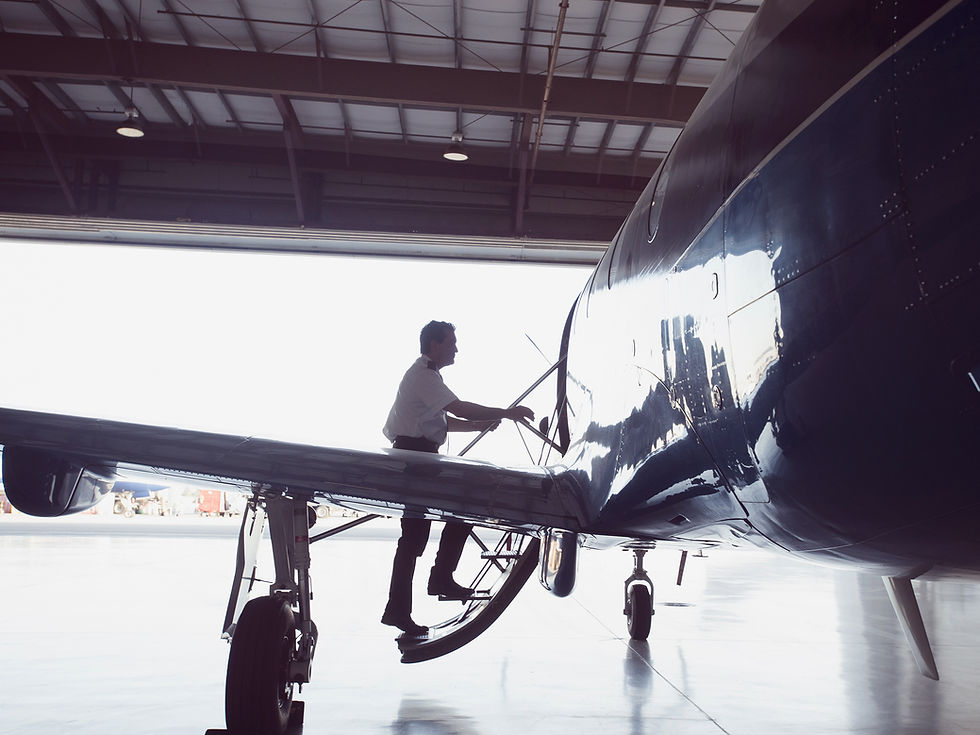Navigating the Skies Virtually: Aerospace Simulation and Training
- Shreshth Virmani
- Aug 23, 2023
- 3 min read

Amidst the clouds and constellations, a different realm of flight emerges—a realm where training meets technology, and reality blends with virtuality. Aerospace simulation and training stand as the pillars of expertise that elevate pilots and aviation professionals to new heights of competence. This article delves into the world of aerospace simulation, uncovering how cutting-edge technology is reshaping training methodologies, enhancing safety, and preparing aviators for the challenges of the sky.
Introduction: The Art of Lifelike Replication
Aerospace simulation and training is a realm where reality is replicated with astonishing precision. From cockpit controls and flight dynamics to atmospheric conditions and emergency scenarios, this immersive training provides aviators with a lifelike environment to hone their skills. The result? More confident and capable professionals who are ready to take flight.
Simulation Ecosystems: Beyond the Classroom
Aerospace simulation transcends traditional classroom training. Full-flight simulators replicate aircraft interiors and cockpit controls to perfection. Virtual reality (VR) systems immerse trainees in a 360-degree experience of the skies. These ecosystems cultivate hands-on skills and decision-making abilities, making training more intuitive and impactful.
Flight Dynamics and Scenarios: Realistic Challenges
Flight is a dynamic ballet of physics and precision. Aerospace simulators replicate these complexities, subjecting trainees to a wide array of scenarios—normal takeoffs, turbulent landings, system failures, and more. These realistic challenges build muscle memory, quick thinking, and adaptability, crucial traits for any aviation professional.
Crisis Management: Preparing for the Unexpected
In aviation, preparedness is paramount, especially in crisis situations. Aerospace simulation goes beyond routine operations, offering training for emergency scenarios. From engine failures to cabin depressurization, trainees are immersed in lifelike crises, where they learn to respond calmly and decisively, minimizing risks and maximizing passenger safety.
Cockpit Resource Management: Team Coordination
Modern aviation is a team effort, with pilots, co-pilots, and crew members collaborating
seamlessly. Aerospace simulation emphasizes cockpit resource management (CRM), allowing trainees to practice effective communication, decision-sharing, and problem-solving. This coordination fosters a cohesive team dynamic in the air.
New Aircraft Familiarization: Bridge to the Unfamiliar
Aerospace simulation shortens the learning curve for new aircraft models. Before ever stepping into a physical cockpit, pilots can familiarize themselves with the layout, controls, and systems of an aircraft through simulations. This familiarity reduces transition times and enhances pilots' adaptability to new equipment.
Data-Driven Feedback: Continuous Improvement
In the realm of aerospace simulation, data is more than zeros and ones; it's the compass guiding improvement. Simulators provide intricate feedback, analyzing trainees' actions and decisions. This data-driven insight highlights areas for improvement, allowing professionals to fine-tune their skills for optimal performance.
Human Factors: Mind and Machine Integration
Aerospace simulation acknowledges the human element of aviation. Human factors—such as decision-making under stress, fatigue management, and situational awareness—are integrated into training scenarios. This holistic approach ensures that aviators are not just skilled operators but also resilient, composed, and attentive professionals.
Realism and Virtuality: A Balancing Act
The magic of aerospace simulation lies in striking a balance between realism and virtuality. While simulators replicate flight experiences, they also enable trainees to explore unconventional scenarios without real-world risks. This blend of authenticity and experimentation is a cornerstone of effective training.
Future Horizons: Virtual Training Evolution
The future of aerospace simulation is exhilarating. Virtual reality will become more immersive, bridging the gap between real and virtual skies. AI-driven simulations will adapt to trainees' learning styles, enhancing personalization. Cloud-based simulations will facilitate remote training, making learning accessible worldwide.
Conclusion: Preparing for the Infinite Horizon
In the ever-expanding sky, aerospace simulation and training stand as the foundation for a safer, more capable aviation industry. As technology advances, so does the effectiveness of training methodologies. From mastering complex flight dynamics to managing emergencies with composure, aerospace simulation nurtures a new generation of aviators who are poised to navigate the skies with confidence and expertise.




Comments